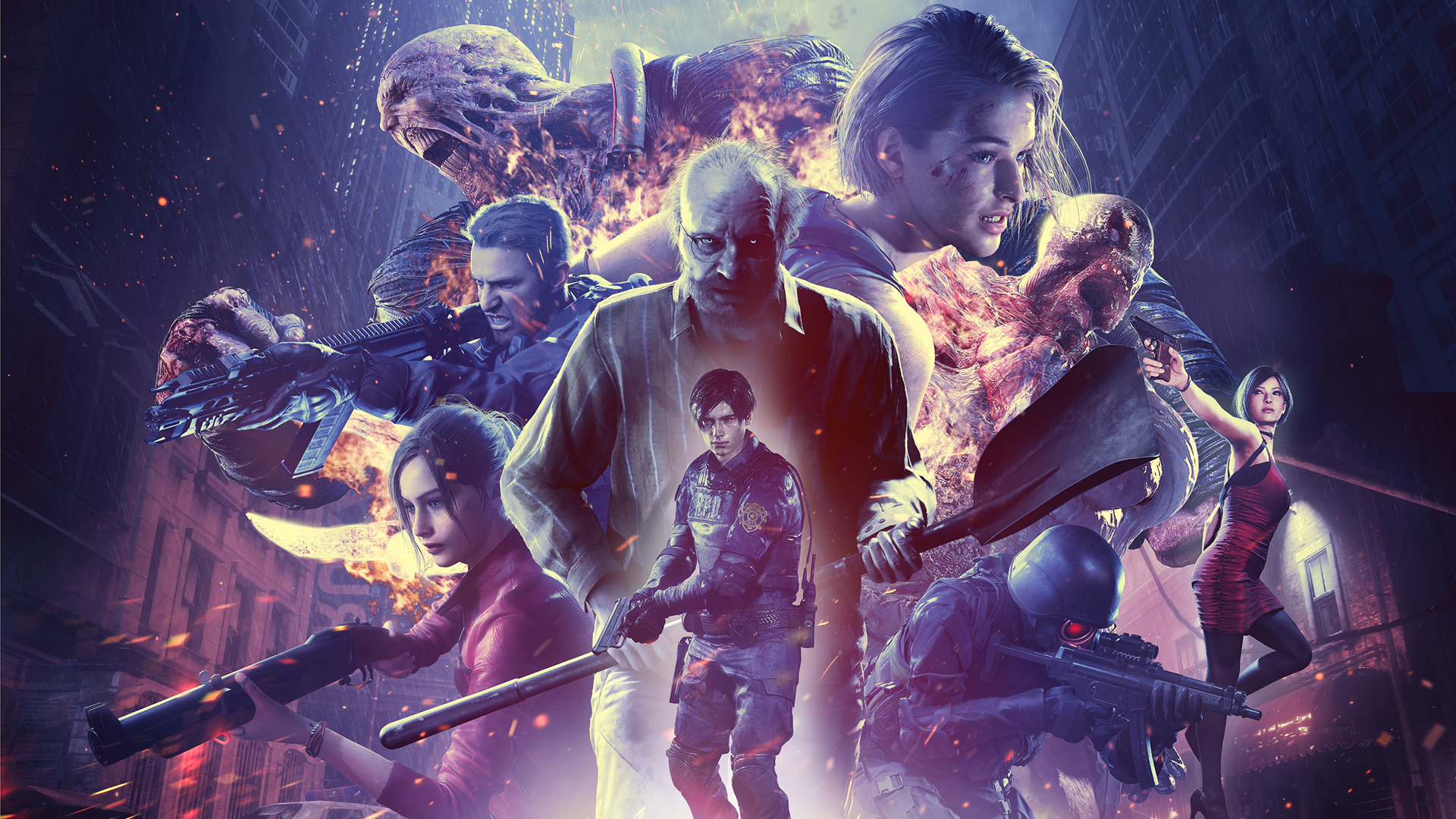
- Resident Evil (1996)
- Resident Evil: Director's Cut (1997)
- Resident Evil 2 (1998)
- Resident Evil 3: Nemesis (1999)
- Resident Evil Survivor (2000)
- Resident Evil – Code: Veronica (2000)
- Resident Evil – Code: Veronica X (2001)
- Resident Evil Gaiden (2001)
- Resident Evil Survivor 2 – Code: Veronica (2001)
- Resident Evil Remake (2002)
- Resident Evil Zero (2002)
- Resident Evil: Dead Aim (2003)
- Resident Evil Outbreak (2003)
- Resident Evil Outbreak: File #2 (2004)
- Resident Evil 4 (2005)
- Resident Evil: Deadly Silence (2006)
- Resident Evil: The Umbrella Chronicles (2007)
- Resident Evil 5 (2009)
- Resident Evil: The Darkside Chronicles (2009)
- Resident Evil: The Mercenaries 3D (2011)
- Resident Evil: Revelations (2012)
- Resident Evil: Operation Raccoon City (2012)
- Resident Evil 6 (2012)
- Resident Evil Revelations 2 (2015)
- Umbrella Corps (2016)
- Resident Evil 7: Biohazard (2017)
- Resident Evil 2 Remake (2019)
- Resident Evil 3: Nemesis Remake (2020)
- Resident Evil: Village (May 7, 2021)
"Enter the Survival Horror..." with those four words, Capcom kick-started a genre revolution. The Resident Evil series made its debut on March 22, 1996, for the original PlayStation. In the 25 years since, Resident Evil has grown to become one of gaming's most beloved and best-selling franchises – shifting over 107 million units in cumulative sales worldwide. As you'll learn in this ultimate guide to the Resident Evil games, one of the reasons the series has been able to enjoy such success and longevity is its willingness to reinvent itself, mutating to better survive its environment.
Because of that desire to survive, the Resident Evil series has a somewhat messy library of games to its name. With seven (soon to be eight) mainline entries and scores of spin-offs – not to mention just as many remakes, remasters, and reissues – it can be difficult to grasp just how wide-reaching and experimental Resident Evil has truly become since 1996. With Resident Evil: Village on the near horizon, and the franchise celebrating its 25th anniversary this year, we felt it was the perfect time to explore the complete history of the Resident Evil games. Oh, and if you're looking for the rankings, we have the best resident evil games right here.
Resident Evil (1996)
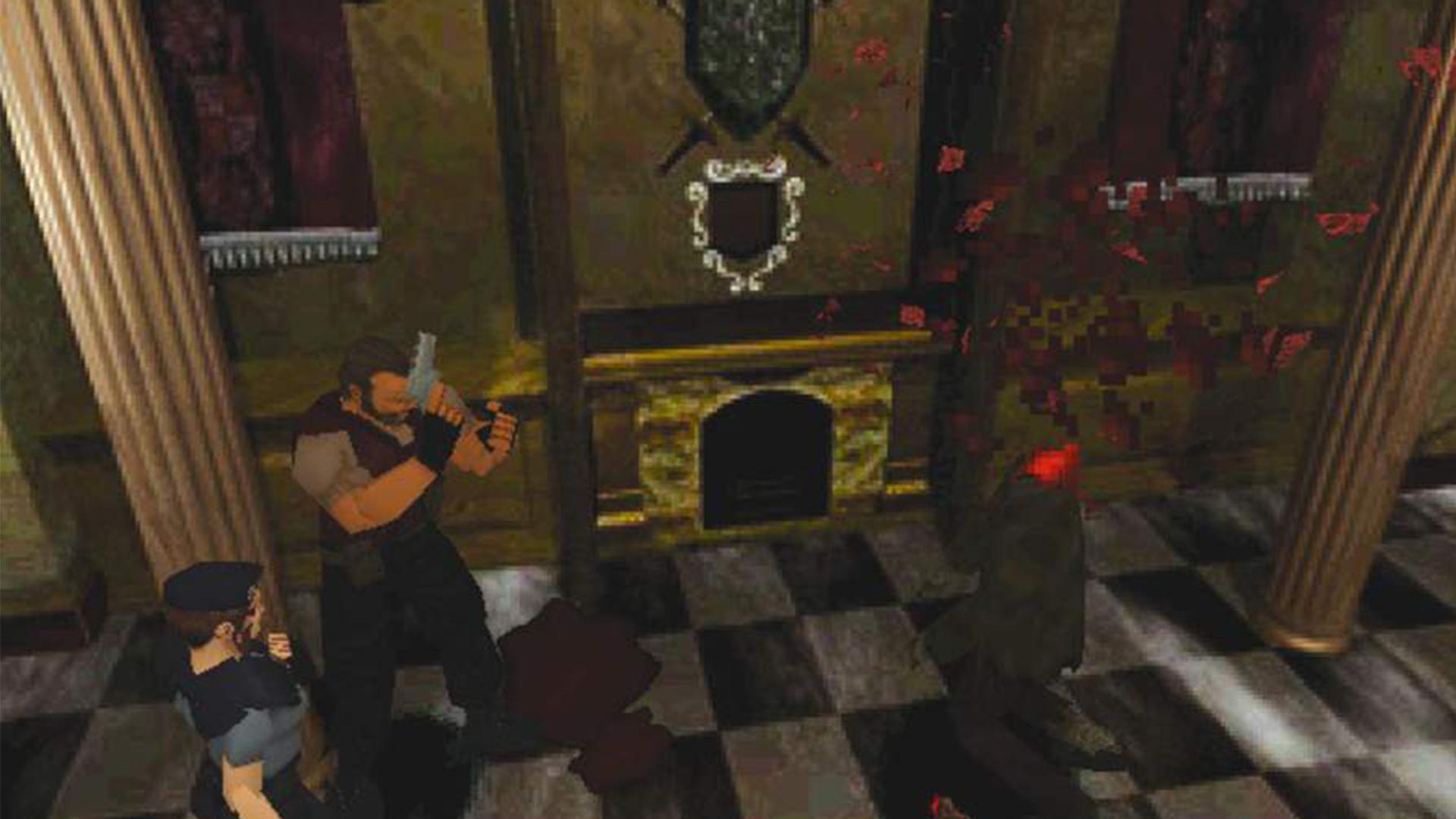
Resident Evil (1996)
Developer(s): In-house | Publisher: Capcom
Platform(s): PS1
Resident Evil wasn't the first survival horror game – that honor (arguably) goes to Sweet Home, the 1989 Capcom cult-classic for the Famicom that served as the primary inspiration for this 1996 PlayStation release – but it is responsible for establishing the foundations of the genre that are still being built upon to this day. 25 years later, and the original incarnation of Resident Evil still stands as one of the greatest horror games of all time.
Forget the hokey opening FMV sequence for a second, and what remains is a masterclass in atmospheric storytelling. It's remarkable how quickly Resident Evil is able to establish a terrifying sense of time and place within the claustrophobic corridors of the Spencer Mansion. Jill Valentine and Chris Redfield's original adventure remains nightmarishly challenging to this day. Not because of its tank controls, but rather its reliance on sparsity, unforgiving resource management, punishing enemies, and an intricately designed mansion that's as renowned for its ridiculous architectural puzzles as it is for a cavalcade of jump scares.
Resident Evil: Director's Cut (1997)

Resident Evil: Director's Cut (1997)
Developer(s): In-house | Publisher: Capcom
Platform(s): PS1
While a sequel to Resident Evil was greenlit just weeks after work wrapped on the original game, it suffered through a famously contentious production cycle. By 1997, the development of Resident Evil 2 was almost content complete but ultimately scrapped, with series creator Shinji Mikami stepping back in to oversee the creative direction. As a result, Capcom scrambled to put something to market that could capitalize on Resident Evil's growing momentum.
Weekly digests, tales from the communities you love, and more
And so we were treated to Resident Evil: Director's Cut. Two versions of this game were released, one with DualShock support and another without, although the core offering was the same. The highlight additions were two new difficulty configurations; Arrange Mode moved key items and enemies to new locations around the Spencer Estate, while Beginner increased the frequency of resource drops and improved player health and damage output. A solid release for anybody that missed the game the first time around.
Resident Evil 2 (1998)
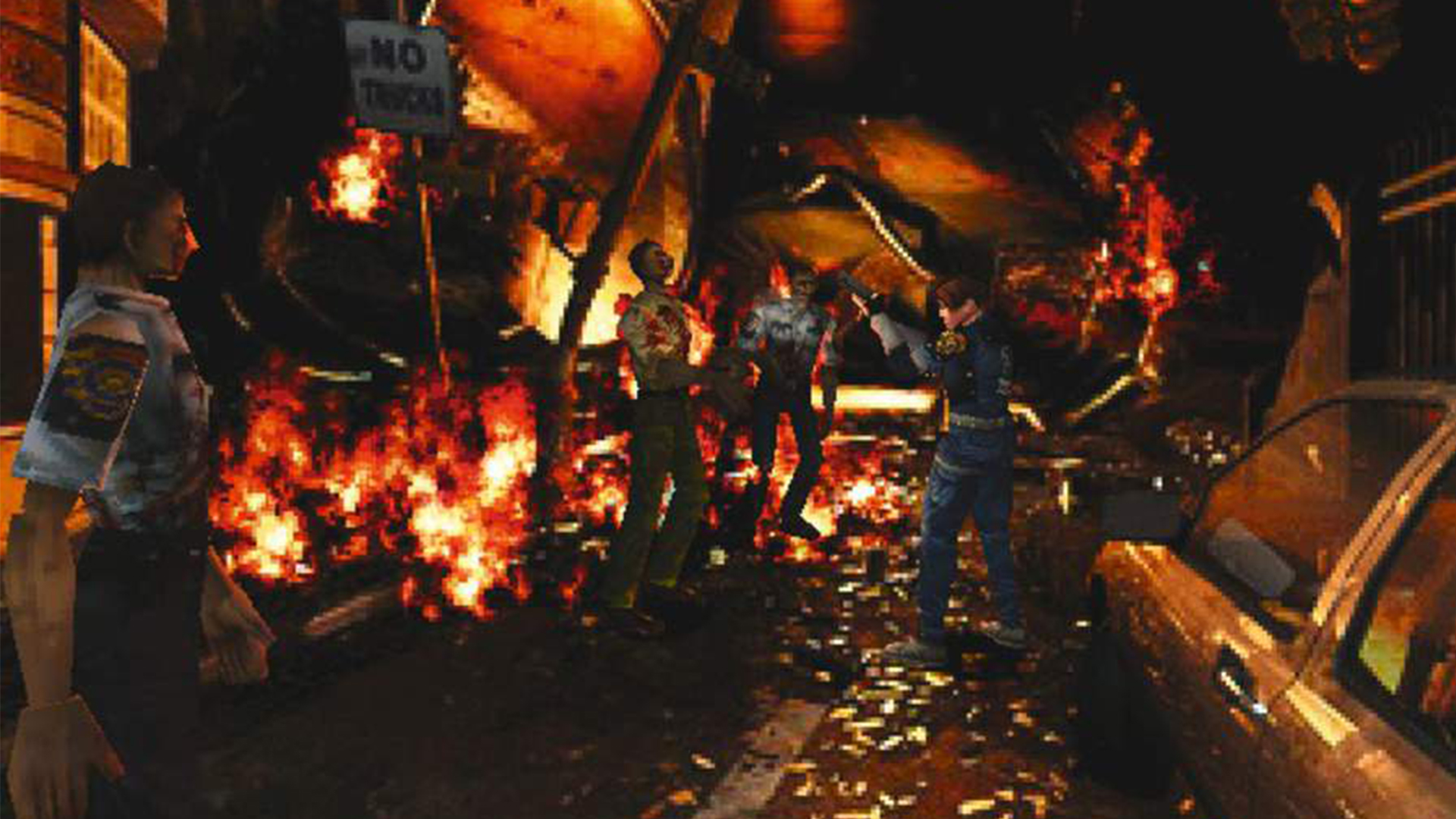
Resident Evil 2 (1998)
Developer(s): In-house | Publisher: Capcom
Platform(s): PS1
Creating a successful sequel is tricky business. Capcom was faced with this challenge in 1996, an enviable task of evolving the formula it had unexpectedly found success with and taking it to the next level. It wasn't a process that Capcom got right the first time around, as you can learn more about in this retrospective on Resident Evil 1.5, but when it did get it right the resulting experience is one of the most impressive sequels of all time.
Resident Evil 2 took the suffocating atmosphere of the Spencer Estate and dragged it out across a sprawling space – Raccoon City, under siege from the living dead. It took the tempered pacing, delicate balance, and haunting challenge that helped to define Resident Evil's debut and improved upon each aspect with what appeared to be relative ease. Leon S. Kennedy and Claire Redfield didn't just make their debuts here; they starred in a game that helped define the PS1 era and entrench key aspects of the Resident Evil formula in legend.
Resident Evil 3: Nemesis (1999)
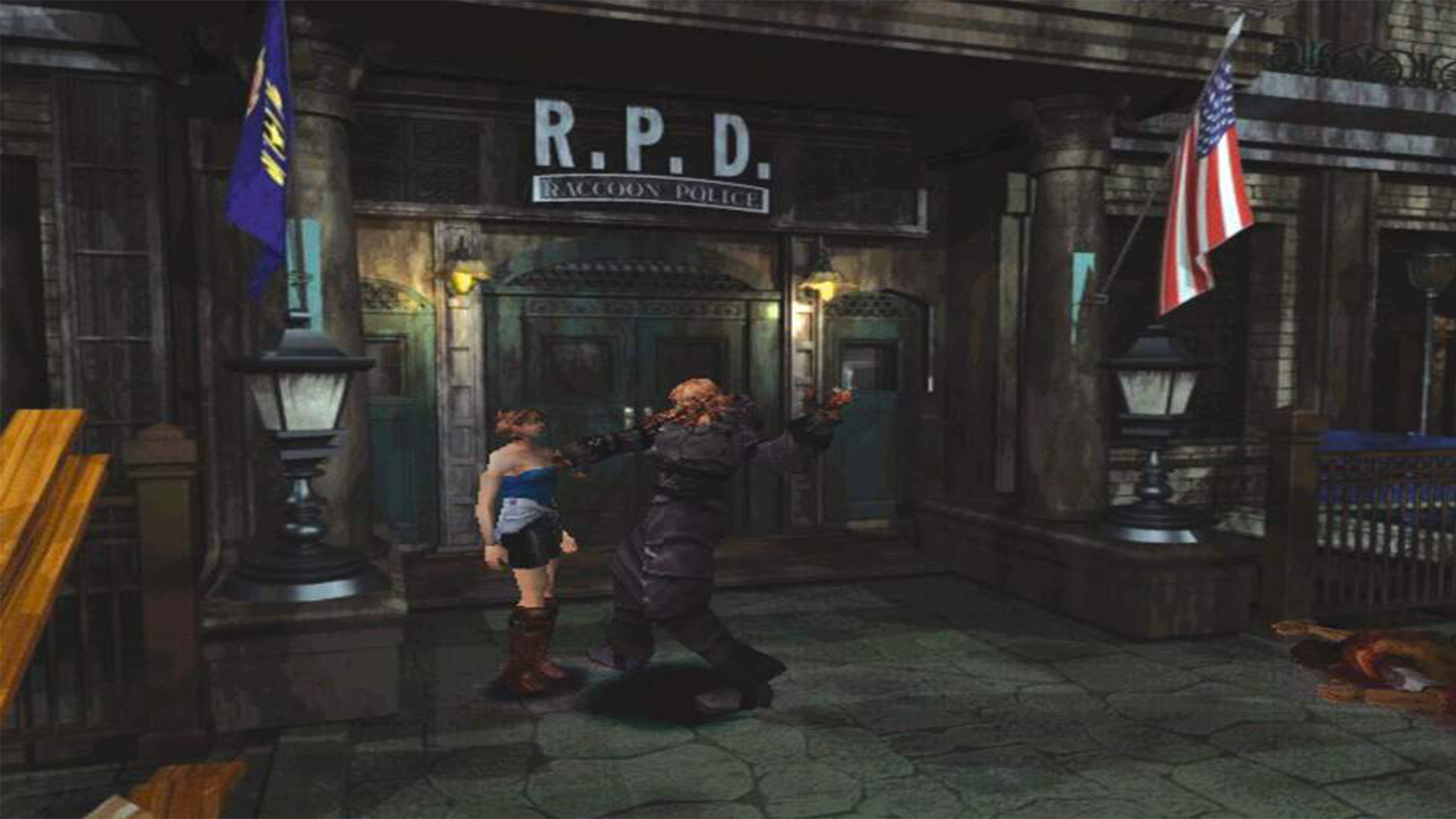
Resident Evil 3: Nemesis (1999)
Developer(s): In-house | Publisher: Capcom
Platform(s): PS1, PC, Dreamcast
Resident Evil 3: Nemesis had a tremendous weight of expectation working against it. Resident Evil 2 was a runaway success, and Capcom was mired in the weeds of development trying to figure out what to do next. Nemesis started life as a spin-off before being retooled into a mainline entry, with Jill Valentine taking the lead in a story that served as both a prequel and a sequel of sorts to RE2. It might have arrived with familiar pre-rendered backgrounds and fixed-camera perspectives, but Resident Evil 3: Nemesis found success through subverting expectations.
Where you could once find safety in the animation of a door opening, Resident Evil 3 ensured that there was nowhere to hide in Raccoon City, thanks to the introduction of Nemesis. Biologically engineered to make your life a living hell, Nemesis was a relentless, stressful threat that worked to dial-up tension and excuse the series' widening focus on action. Resident Evil 3: Nemesis remains one of the series' best, thanks to its pacier play, malleable narrative frame, and The Mercenaries: Operation Mad Jackal mode – an early iteration of the fan-favorite Mercenaries mini-game.
Resident Evil Survivor (2000)
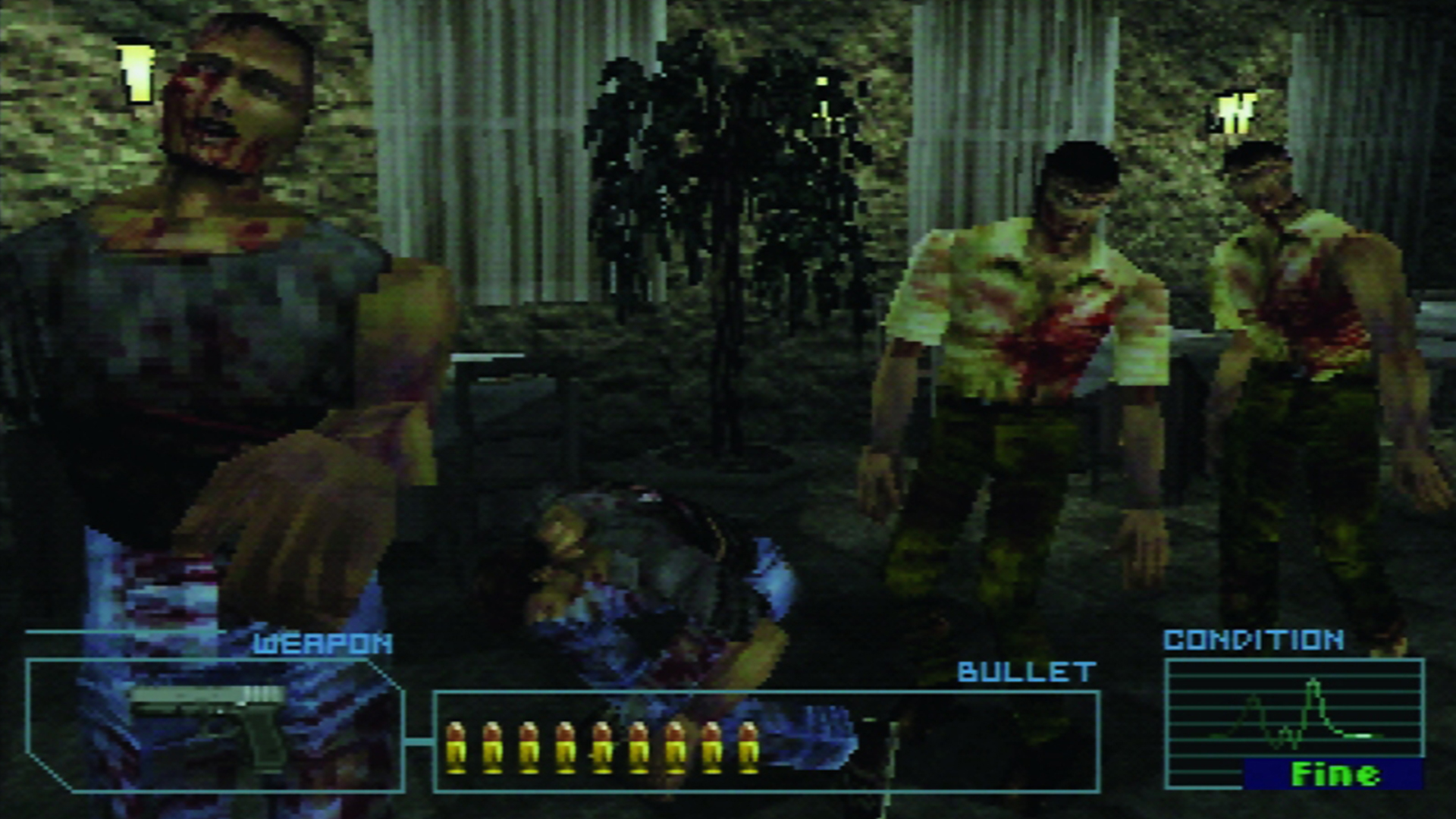
Resident Evil Survivor (2000)
Developer(s): TOSE | Publisher: Capcom
Platform(s): PC, PS1
Many were surprised when Capcom embraced first-person combat for Resident Evil 7 – the publisher's bold return to form, following the much-maligned sixth installment in the mainline series – but it wasn't the publisher's first flirtation with the more intimate perspective. No, that honor goes to Resident Evil Survivor, a game that is best left to gather dust in the annals of the series' history.
Set shortly after the explosion that wiped Raccoon City off of the map, you're forced to wade through the muddy 3D environments of Sheena Island (an early indicator of how important extravagant pre-rendered backgrounds were to Resident Evil's original vibe) and slowly fight on-rails against a parading army of Resi's most iconic monsters. While players in Europe and Japan could do so with a light-gun in hand, those in the US could not, due in part to the cultural fall out surrounding the tragic Columbine High School massacre of 1999. Regardless of how you played it, Survivor was a poor facsimile of Time Crisis that failed to impress.
Resident Evil – Code: Veronica (2000)
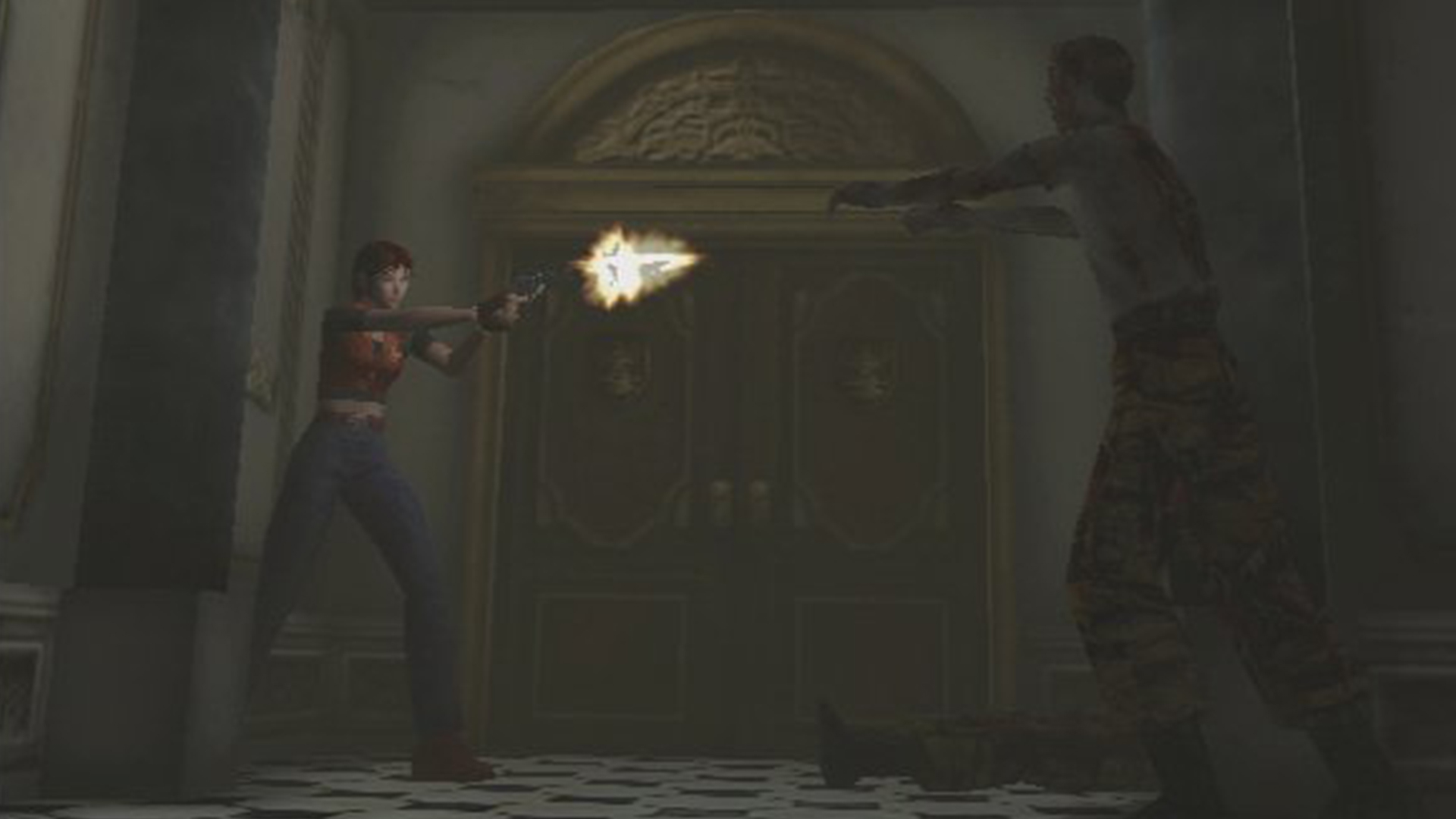
Resident Evil – Code: Veronica (2000)
Developer(s): In-house | Publisher: Capcom
Platform(s): Dreamcast
In a strange twist of fate, Resident Evil – Code: Veronica was, once upon a time, designed to lead the series into the future – although it ultimately landed as a spin-off that was a little ahead of its time. Code: Veronica was the first game in the series to introduce real-time 3D environments, a more dynamic camera, and it furthered Resident Evil's push into action territory.
The blockbuster framing of Code: Veronica's truly outrageous scenario design was, in hindsight, a foreshadowing to where Resident Evil would eventually end up with its fifth and sixth installments. Despite this, Claire and Chris Redfield's adventure across a remote prison island and into a secretive Antarctic research facility remains a faithful entry to the series. It impressed with its dense atmosphere, an embrace of gothic horror inspired environmental design, and a punishing difficulty curve that ensured survival was still something you had to fight for.
Resident Evil – Code: Veronica X (2001)

Resident Evil – Code: Veronica X (2001)
Developer(s): In-house | Publisher: Capcom
Platform(s): PS2
Resident Evil – Code: Veronica was controversial when it made its debut. Not because of the alterations it made to strands of the Resident Evil's DNA, necessarily, but because of its release on Sega Dreamcast – it was the first 'mainline' game in the series to not make its debut on a Sony platform. It wouldn't be long before the PS2 got a version all of its own, with Code: Veronica X landing in early 2001.
When people cite Code: Veronica as a 'fan favorite', they are probably talking about this version of the game due to the popularity of the PS2 at the time. While the underlying game is largely the same, Code: Veronica X featured slight graphical and performance improvements, along with over 10 minutes of new cinematic cutscenes; the extended cut focused on the fanbase's growing infatuation with Albert Wesker and his involvement with the Umbrella Corporation would help shape the narrative arc of Resident Evil games for years to come.
Resident Evil Gaiden (2001)

Resident Evil Gaiden (2001)
Developer(s): Capcom, M4 | Publisher: Capcom
Platform(s): Game Boy Color
Resident Evil Gaiden is something of an underrated classic. Released exclusively for Game Boy Color, co-developers Capcom and M4 did an admirable job of taking Resident Evil's claustrophobic horror and transferring it to the small screen. Admirable, but not perfect. And yet, despite its very real problems, Resident Evil Gaiden is at least original.
There's nothing quite like Resident Evil Gaiden in the Resident Evil franchise, nor the library of games available on the Game Boy Color. It takes place on a zombie-infested Cruise Ship (as perfect of a setting for survival horror as you'd ever hope to find), in which Leon S. Kennedy and Barry Burton battle for survival in a story that is now (sadly) considered non-canonical. Between the weird puzzles, the gripping narrative, finicky controls, gorgeous aesthetics, and strange first-person combat mini-game, Resident Evil Gaiden is a product of its time that has to be played to be believed.
Resident Evil Survivor 2 – Code: Veronica (2001)
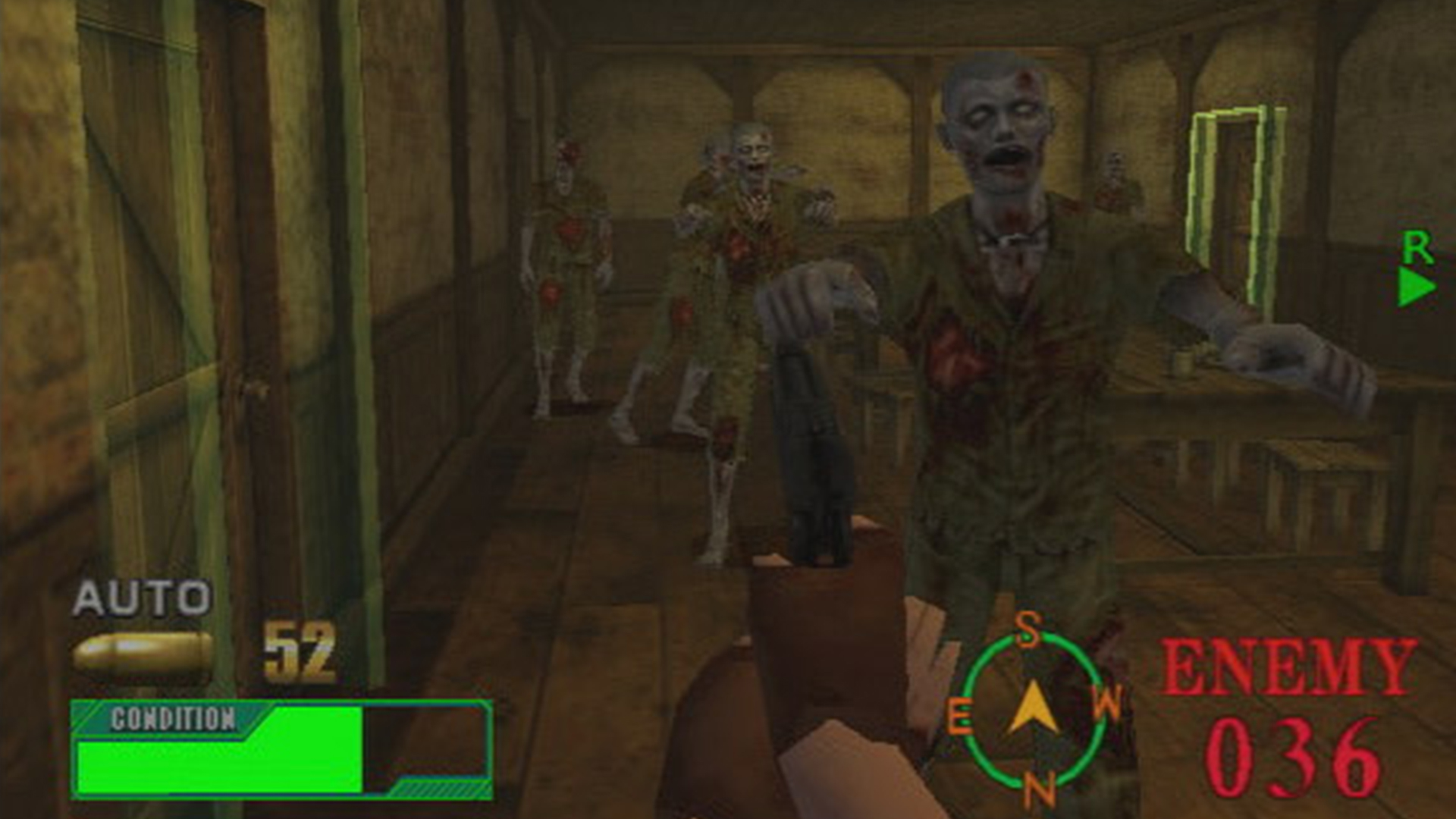
Resident Evil Survivor 2 – Code: Veronica (2001)
Developer(s): Capcom, Namco | Publisher: Capcom
Platform(s): Arcade, PS2
Resident Evil Survivor was poorly received, but that didn't stop Capcom from putting a second installment of the Gun Survivor series into production. Resident Evil Survivor 2 – Code: Veronica attempted to tie itself more firmly into the mainline games, this time putting us behind the eyes of Claire Redfield as she searched for her brother following the Raccoon City incident.
Much like its predecessor, Resident Evil Survivor 2 was further proof that Resident Evil and the light-gun shooter genre didn't play well together at this point in time. Featuring characters and enemies of Code: Veronica, there was something here for fans that were desperate for more of Claire's adventure, but its movement and motion still felt akin to running your hands through a vat full of sticky biohazard. Featuring support for Namco's GunCon 2 and the DualShock 2 in Japan and Europe, this unlikely sequel fared a little better in arcades than it did at home, but Survivor 2 never made its way to the shores of North America.
Resident Evil Remake (2002)

Resident Evil Remake (2002)
Developer(s): In-house | Publisher: Capcom
Platform(s): GameCube
Capcom had a point to prove at the turn of the century. The publisher announced that it had entered into an exclusivity agreement with Nintendo to bring the series to GameCube. This created a fiasco of sorts, as fans – who had traditionally been able to play Resident Evil games on PlayStation – voiced opposition to the idea that an eventual Resident Evil 4 would be out of their reach. This somewhat toxic environment set the stage for Resident Evil Remake – a game that nobody saw coming, and few would ever forget.
As one of Capcom's first games for GameCube, the studio set out to push the system's limits before it began to invest in the next numbered entry of the series. The result is undoubtedly the best version of Resident Evil, one of the finest horror games of the sixth generation, and one of the greatest remakes of all time. Resident Evil Remake retrofitted its action with many of the mechanics introduced to the series since 1996, featured a truly astonishing visual design, and made several smart quality of life improvements that helped ensure REmake's status as one of the best in Resident Evil history.
Resident Evil Zero (2002)
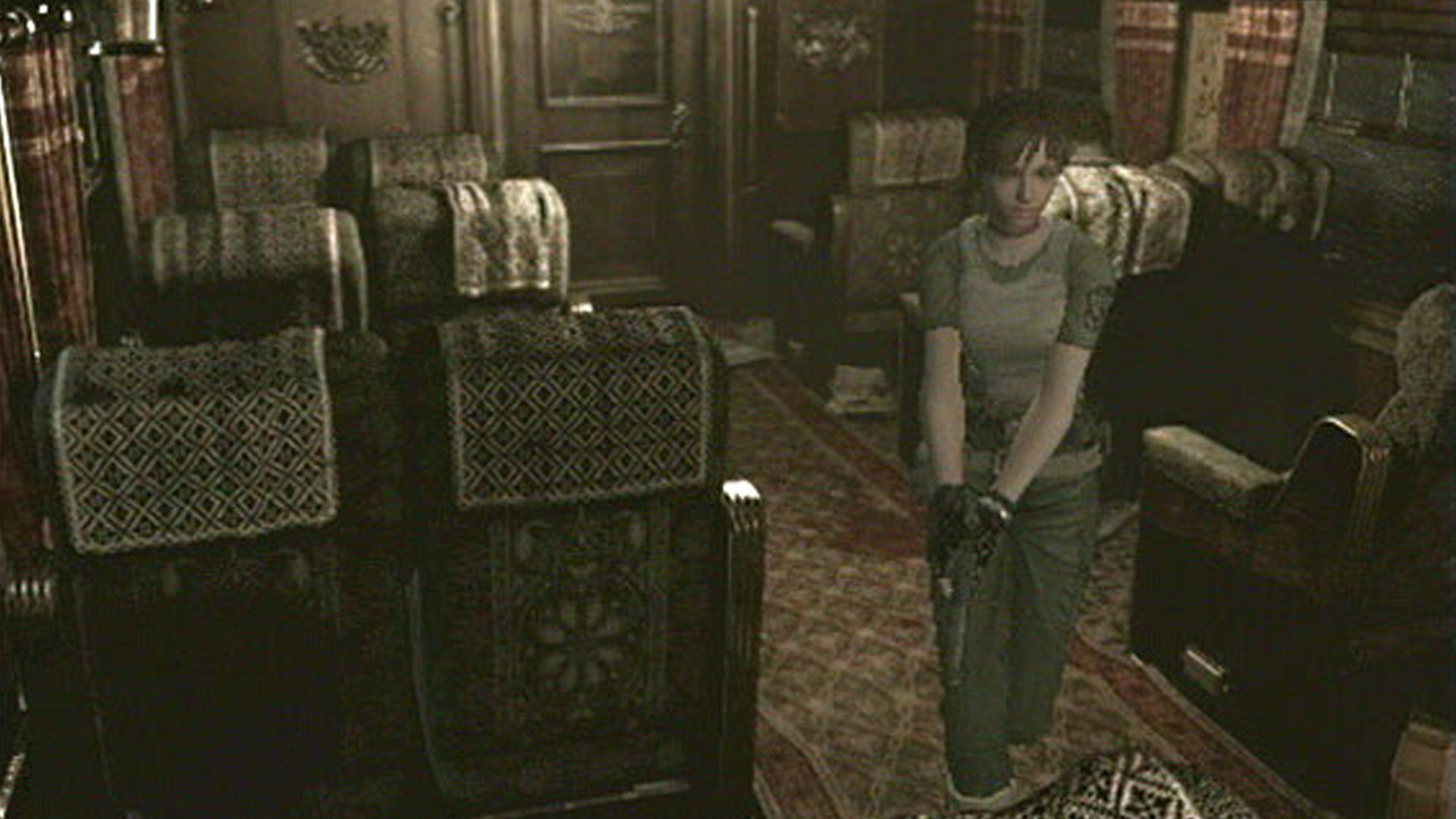
Resident Evil Zero (2002)
Developer(s): In-house | Publisher: Capcom
Platform(s): GameCube
Resident Evil Zero was the last of its kind. Arriving as a GameCube exclusive in 2002 – although it was later given an HD refresh and subsequently ported to just about every viable platform in the years since – Resident Evil Zero cast itself as a prequel to the original Resident Evil, finally shedding some light on the evil that enveloped the S.T.A.R.S. Bravo Team in the dark of the Arklay Mountains.
Resident Evil Zero is criticized by some for the same reasons it is praised by others; it was the last mainline game to use the fixed-camera formula, pre-rendered backgrounds, and the formidable Resident Evil formula for generating scares. Rebecca Chambers leads this memorable adventure from an abandoned train deep into the Spencer Estate, working in tandem with convicted criminal Billy Coen. This framing allowed Capcom to experiment with a unique character swap mechanic that introduced a new twist to everything from puzzle design to resource management.
Resident Evil: Dead Aim (2003)

Resident Evil: Dead Aim (2003)
Developer(s): Cavia | Publisher: Capcom
Platform(s): PS2
Say what you will about Capcom, but you have to admire its persistence. In spite of the negative reception to Resident Evil Survivor and its sequel, the publisher continued trying. Resident Evil: Dead Aim is the fourth game in the Gun Survivor series, following Dino Stalker, a more successful iteration of the light gun shooter set in the world of Dino Crisis. Dead Aim made some strides forward, literally – dumping the on-rails structure of its predecessor in favor of manual movement options.
Best played with a light-gun in hand, Resident Evil: Dead Aim arrived as a strange hybrid between third-person movement and first-person action. Did it always work? No, not really. Should developer Cavia be commended for trying? Yes, absolutely. Dead Aim showed potential in the marriage between Resident Evil's core essence and Capcom's obsession with light-gun shooters, paving the way for the publisher's successful experiments with the franchise on the Nintendo Wii.
Resident Evil Outbreak (2003)

Resident Evil Outbreak (2003)
Developer(s): In-house | Publisher: Capcom
Platform(s): PS2
Arriving when platform holders and publishers alike were beginning to heavily invest in online multiplayer on console, Resident Evil Outbreak remains a cult classic that too few had the means or opportunity to experience as intended. This PS2 release proved that everything is better with friends, even the isolating survival horror ethos at the heart of Resident Evil.
Set across five episodic scenarios in Raccoon City, Resident Evil Outbreak gave players their first opportunity to experience chaos in the streets as the T-Virus outbreak first spiraled out of control. Despite the lack of voice control and the hurdles that had to be navigated to get a PS2 online back in 2003, Outbreak proved to be one of Resident Evil's most successful splinters from the style of play that the series built its reputation on.
Resident Evil Outbreak: File #2 (2004)
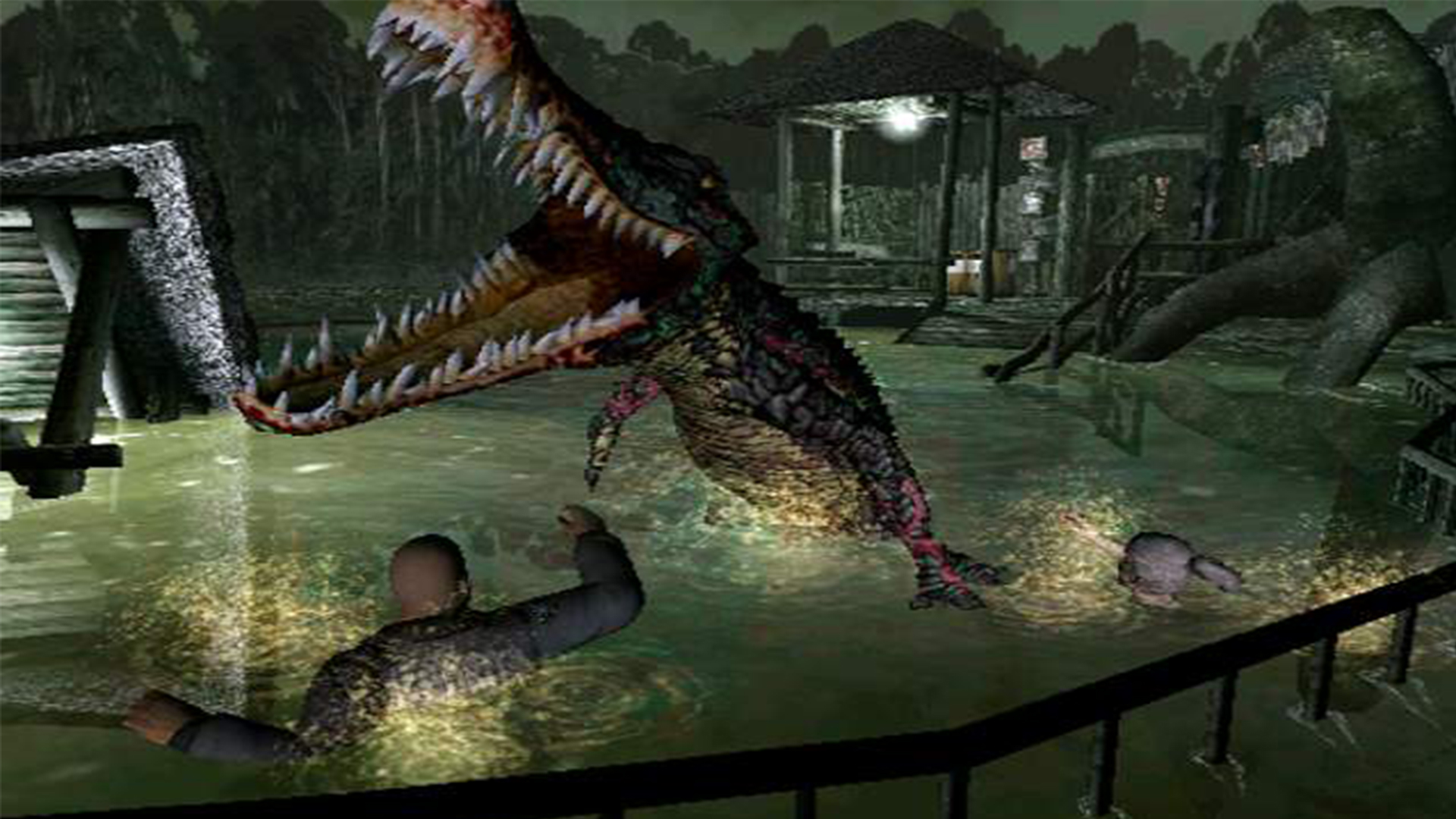
Resident Evil Outbreak: File #2 (2004)
Developer(s): In-house | Publisher: Capcom
Platform(s): PS2
The original Resident Evil Outbreak had a messy development cycle, with Capcom struggling to finalize the concept for Biohazard Online internally and allocate resources to network-focused games (an initiative that ultimately gave us Monster Hunter). But the decision to push a sequel into development was an easier sell for Capcom. This standalone expansion featured the same eight characters from the original game, thrusting them into five new scenarios – episodic storylines that were cut from the first game due to resource constraints, but once glimpsed in its earliest E3 trailers.
Featuring more comprehensive online systems and a larger suite of modes, Resident Evil Outbreak: File #2 lacks the ambition and charm of its predecessor, but it was still an absolute must-play for anybody that had gone to the effort to get their PS2 connected to the earliest iteration of the PlayStation Network. Oh, and Resident Evil Outbreak: File #2 featured one of the best areas ever to be seen in Resident Evil – a truly haunting zoo filled with exotic animals infected by the T-Virus.
Resident Evil 4 (2005)

Resident Evil 4 (2005)
Developer(s): In-house | Publisher: Capcom
Platform(s): GameCube
Resident Evil 4 is arguably the greatest action game of all time and one of the most important releases in the modern era of gaming. Less than a decade on from Resident Evil's debut, Capcom pushed a sweeping reinvention of the series into production. The GameCube exclusive didn't just change Resident Evil, but the entire industry around it.
The camera was wrestled from fixed positions in the environment and bolted tightly to Leon S. Kennedy's shoulder. Resident Evil 4 was faster and smarter than its predecessors, but it still forced players to plant their feet in the ground before they could take a shot – a design decision that worked to gently generate tension and claustrophobia, even in the wider spaces of the game's village and castle locations. Resident Evil 4 changed action games, reinvented third-person shooters, and ensured that the Resident Evil series would enter its second decade in a stronger position than ever before.
Resident Evil: Deadly Silence (2006)

Resident Evil: Deadly Silence (2006)
Developer(s): In-house | Publisher: Capcom
Platform(s): Nintendo DS
Released to commemorate the 10th anniversary of Resident Evil and capitalise on the Nintendo DS's growing success, Capcom released an enhanced version of the original Resident Evil for the system. While the publisher was no stranger to Nintendo ports at this stage – releasing versions of Resident Evil 2 and Resident Evil 3 on GameCube in 2003 – Resident Evil: Deadly Silence is worth highlighting for just how strange it was.
Capcom made use of the Nintendo DS' unique features through its Rebirth mode. The map was displayed on the top screen while the action was claustrophobically contained to the bottom screen, zombies could be slashed at with the stylus, puzzles were rebuilt to make use of touch-based input, and there was even a mini-game where you had to blow into the microphone to perform CPR on an injured Richard Aiken. Deadly Silence was weird and wonderful, just like the console it was built for.
Resident Evil: The Umbrella Chronicles (2007)

Resident Evil: The Umbrella Chronicles (2007)
Developer(s): Capcom, Cavia | Publisher: Capcom
Platform(s): Wii
Following its collaboration on Resident Evil: Dead Aim, Capcom and Cavia took Resident Evil's ongoing fascination with the light-gun shooter to its inevitable conclusion. The studios dropped the third-person/first-person hybrid design and returned to the style of the early Gun Survivor games for Resident Evil: The Umbrella Chronicles, opting for an on-rails presentation and more universally understood control systems as it embraced the fun and freedom so evident in the early years of the Nintendo Wii.
The Umbrella Chronicles is simplistic, quick to finish, and relatively light on scares, but what it lacks in depth it makes up for with unbridled fun. The campaign is a quick stop through the most significant moments of Resident Evil Zero, Resident Evil, and Resident Evil 3: Nemesis, pushing you through familiar locations with the WiiMote gripped between your fingers like a Samurai Edge sidearm. Resident Evil: The Umbrella Chronicles proved that Capcom was right to keep trying.
Resident Evil 5 (2009)
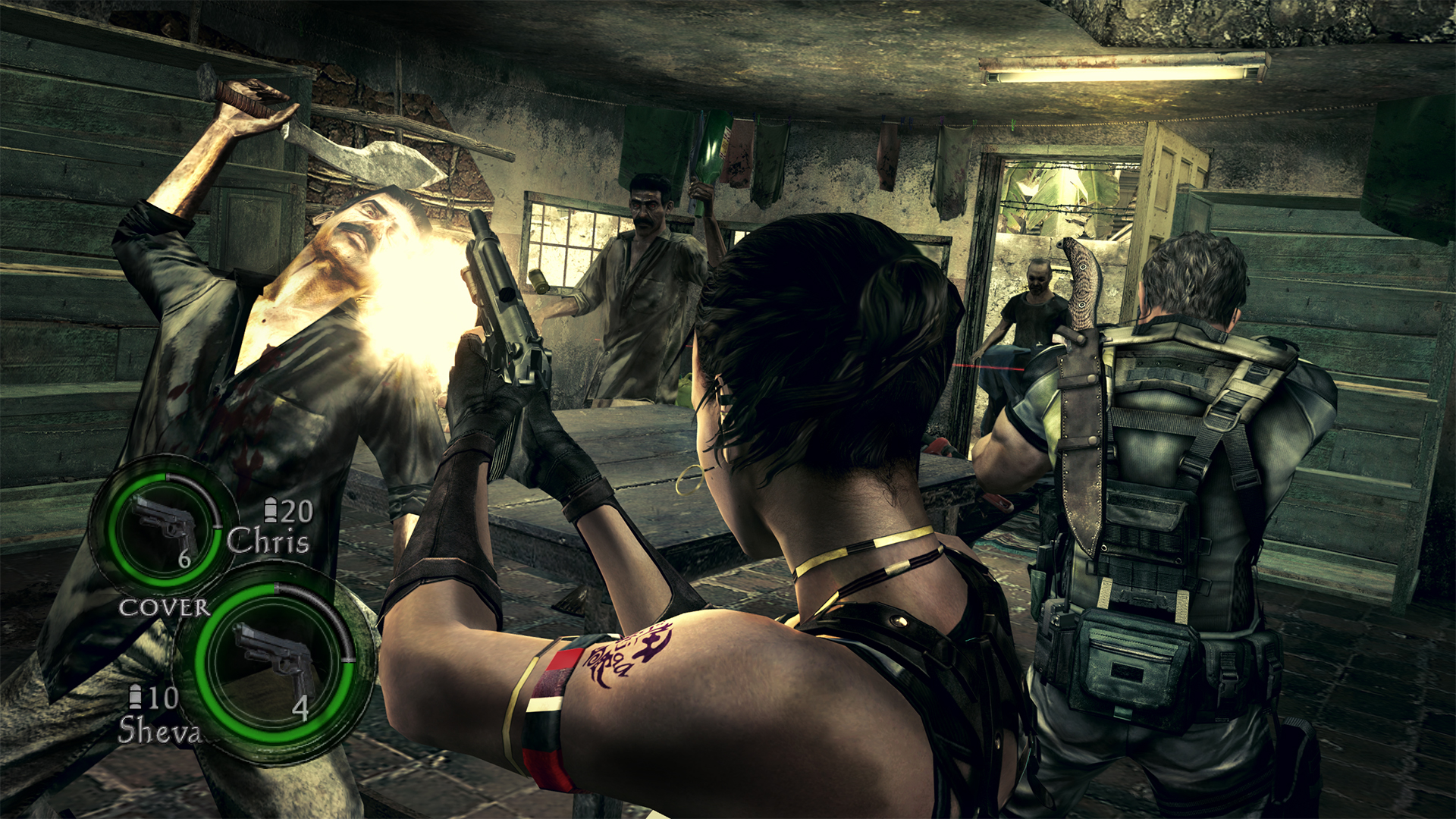
Resident Evil 5 (2009)
Developer(s): In-house | Publisher: Capcom
Platform(s): PC, PS3, Xbox 360
Love it or loathe it, Capcom's full-throated endorsement of the action genre remains its biggest success. Resident Evil 5 isn't only the best-selling game in the Resident Evil series, it is one of Capcom's best-selling games full stop. Over 12 million people followed Chris Redfield and Sheva Alomar's adventure throughout a fictional region of Africa, with the BSAA agents attempting to retrieve a bio-organic weapon before it reaches the black market.
The first Resident Evil game of the HD era, Resident Evil 5 was a frequently exhilarating action game, thanks to its awesomely ridiculous scenario design – the high-octane action playing well within one of the most vibrant and rich visual presentations of its era. Still, its sticky control mechanics, unpredictable partner AI, problematic narrative framing, and the shedding of any pretense of survival horror only worked to create division among fans. Played with a friend in co-op, Resident Evil 5 offers no shortage in entertainment, but it failed to innovate or impress as strongly as its mainline predecessors.
Resident Evil: The Darkside Chronicles (2009)
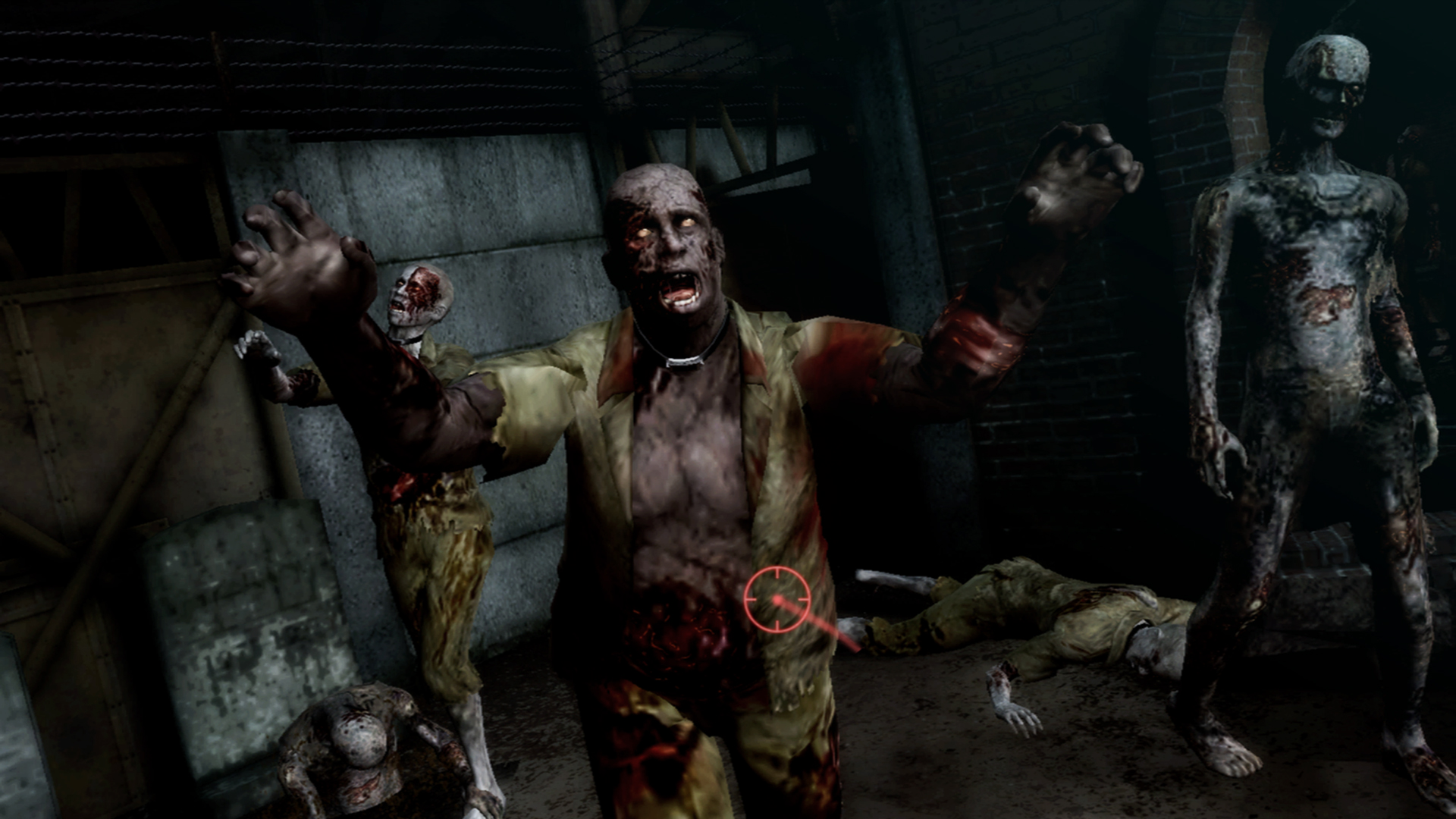
Resident Evil: The Darkside Chronicles (2009)
Developer(s): Capcom, Cavia | Publisher: Capcom
Platform(s): Wii
A sequel that nobody knew they wanted, Resident Evil: The Darkside Chronicles was the follow-up to the surprise Wii hit The Umbrella Chronicles. Where the first game took players on a light on-rails venture through the storylines of Resident Evil Zero, Resident Evil, and Resident Evil 3: Nemesis, The Darkside Chronicles answered fan demands to return to the worlds of Resident Evil 2 and Code: Veronica.
Making good use of the Wii-mote as a make-believe sidearm, The Darkside Chronicles proved to be a fun light-gun game that was fun enough solo or fighting alongside a friend. Sadly, some strange changes were made to core play that diminished some of its challenge – making headshots easier and a sub-part dynamic difficulty, for example – while the decision to introduce a shaky camera ultimately worked to disrupt its longevity.
Resident Evil: The Mercenaries 3D (2011)

Resident Evil: The Mercenaries 3D (2011)
Developer(s): In-house | Publisher: Capcom
Platform(s): Nintendo 3DS
Following its introduction back in 1999's Resident Evil 3: Nemesis, the Mercenaries Mode quickly became a fan favorite. Stripping away "horror" from the equation entirely, Mercenaries pulled the focus onto survival as it tasked you with sprinting through familiar Resident Evil locations in as fast a time as possible, killing as many enemies along the way as you could.
The mode was subsequently brought back for Resident Evil 4 and Resident Evil 5 before eventually being given its own dedicated spin-off for Nintendo 3DS. That's when players and publisher alike discovered that Mercenaries Mode is just that: a mode. Easy to play and even easier to sink time into, Resident Evil: The Mercenaries 3D handled well with the Circle Pad Pro, made good use of the Nintendo 3DS' visual capabilities, and would prove to be a lot of fun in short bursts, but its choppy performance and lack of depth left it quickly forgotten.
Resident Evil: Revelations (2012)
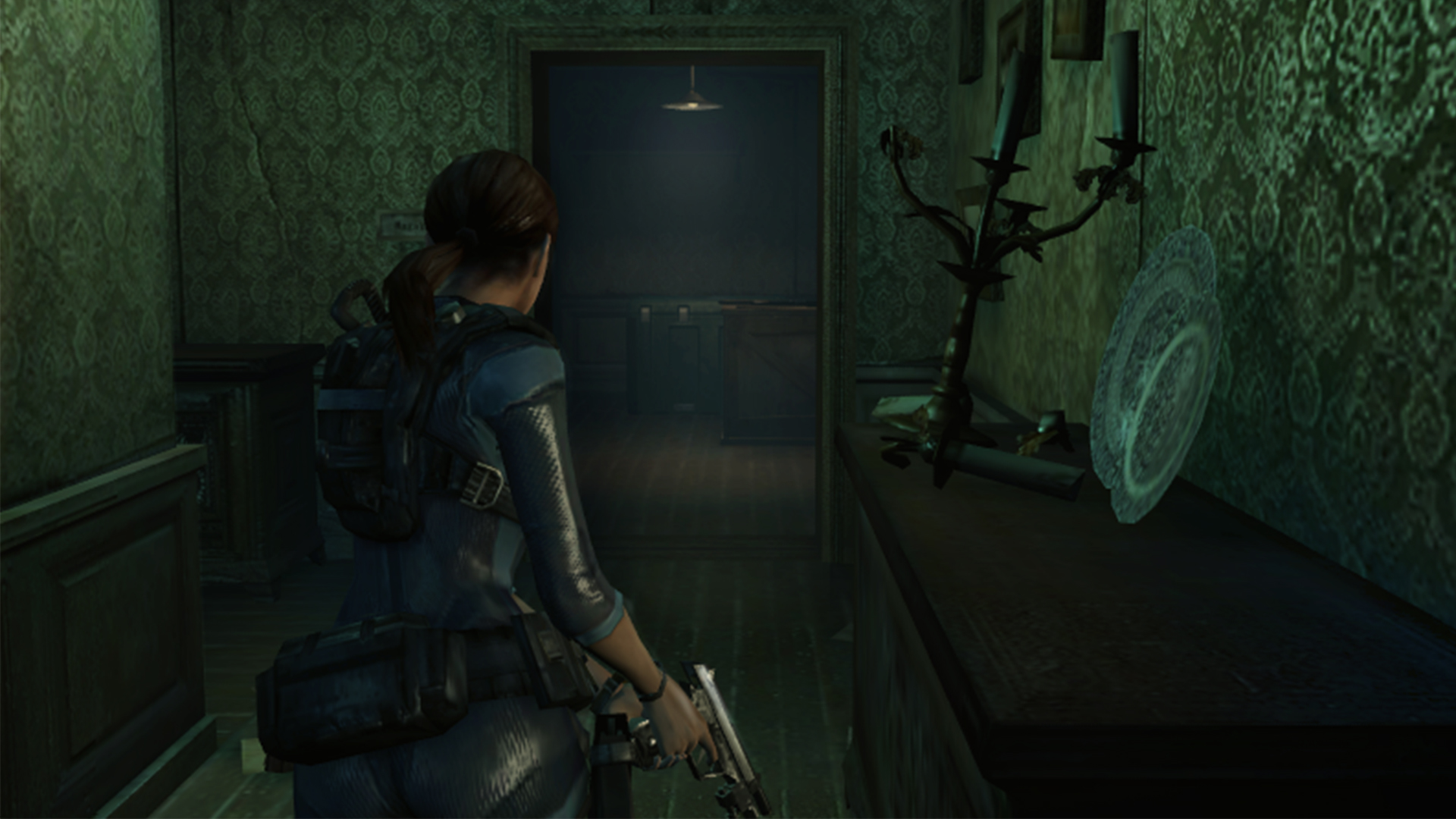
Resident Evil: Revelations (2012)
Developer(s): In-house | Publisher: Capcom
Platform(s): Nintendo 3DS
When Resident Evil: Revelations released in 2012, it had appeared that the Resident Evil series was about to fracture. Even with its launch some nine months away, it was clear that Resident Evil 6 would further Capcom's exploration of the action genre and, as a result, Resident Evil: Revelations was seen as the natural evolution of a style of play last seen in 2000's Resident Evil – Code: Veronica.
Resident Evil: Revelations emphasized evasion over action, and survival over confrontation. It tried to combine Resident Evil's old-school design sensibilities with the controls of Resident Evil 4, but it didn't quite hit the mark. The opportunity to spend more time with Chris Redfield and Jill Valentine was, of course, welcomed, but Revelations was ultimately bound by the limitations of the Nintendo 3DS and its clunky Circle Pad Pro peripheral. In spite of its problems, it's a solid entry that showed there was still success to be found in courting survival horror.
Resident Evil: Operation Raccoon City (2012)
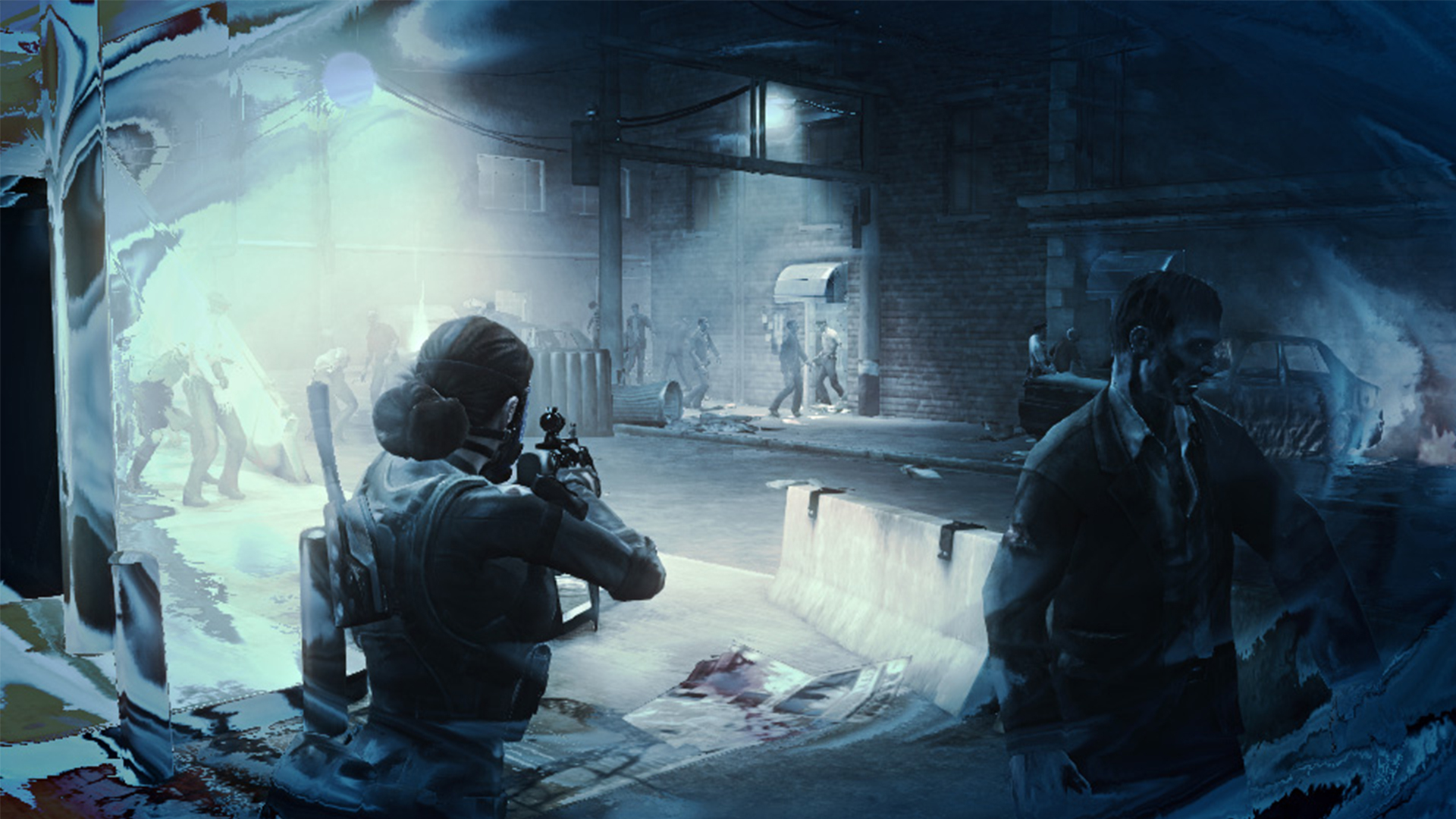
Resident Evil: Operation Raccoon City (2012)
Developer(s): Slant Six Games | Publisher: Capcom
Platform(s): PC, PS3, Xbox 360
Resident Evil has always been infatuated with villains. Not the hordes of mutated humanoids that parade through Capcom's meticulously crafted funhouses, but rather the likes of Albert Wesker, Ada Wong, Hunk, and that one time a brainwashed Jill Valentine dyed her hair blonde. Resident Evil: Operation Raccoon City attempted to capitalize on all of that, but it missed the mark in about every way imaginable.
For starters, it stuck you in the presence of Umbrella Security Service's Delta Squad, an army of faceless guns for hire whose commitment to having no discernible personality was so strong that it ran through every facet of the game. Unwieldy controls, unpredictable AI, and tiresome scenario design were just some of the highlights, made worse still by a perfunctory rendering of Resident Evil 2's original setting. Operation Raccoon City was the logical endpoint to Capcom's misplaced investment in the action genre.
Resident Evil 6 (2012)

Resident Evil 6 (2012)
Developer(s): In-house | Publisher: Capcom
Platform(s): PC, PS4, Xbox 360
Resident Evil 6 is proof of a universal truth: you can't please everybody. Not all at once, at any rate. Capcom discovered this the hard way, as it attempted to deliver a sprawling Resident Evil adventure that featured four lengthy interwoven campaigns, a four-player co-op mode, a suite of new action-focused systems and mechanics, and a return of the living dead to give Leon S. Kennedy, Chris Redfield, Jake Muller, and Ada Wong plenty of rotting bodies to pump bullets into.
It was a mess, albeit one that came from a good place. Resident Evil 5 remains Capcom's best-selling game of all-time, so it's no surprise that the studio would try to capitalize on the response to its full-throated endorsement of the action genre, capitulating to requests for more timeline shenanigans and the return of classic zombies after their decade-long absence. Resident Evil 6 might be Capcom's fourth best-selling game, but it was received so poorly that it prompted a wild reimagining to the series. So, say what you will about Resident Evil 6, but we wouldn't have the pure terror of Biohazard without it.
Resident Evil Revelations 2 (2015)
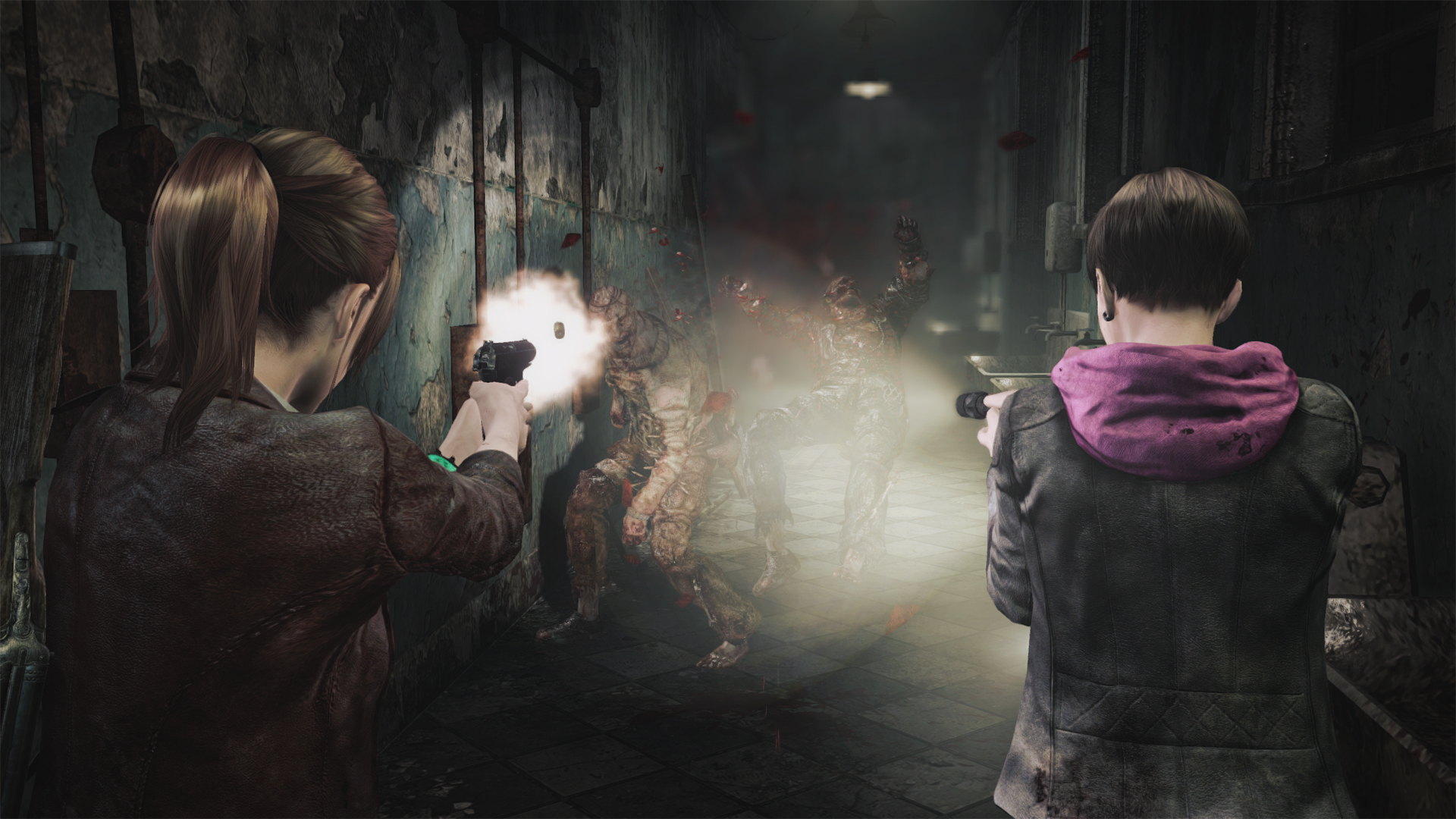
Resident Evil Revelations 2 (2015)
Developer(s): In-house | Publisher: Capcom
Platform(s): PC, PS3, Xbox 360
In many ways, Resident Evil: Revelations 2 was the collision of Resident Evil's past and present. It took all of the lessons Capcom had learned through its flirtation with action and consolidated it against Resident Evil's penchant for schlocky dialogue, expressive weapons, and frantic scenario design. Resident Evil: Revelations 2 might have been pitched as a vehicle to explore the gaps in Resident Evil's mythology, but it ended up being so much more than that.
As an episodic adventure framed around the misadventures of Claire Redfield and Barry Burton (the fan-favorite finally given his time to shine as a playable character), Resident Evil: Revelations 2 proved that the series still had potency in a land before Resident Evil 7. Whether you played it in co-op or as a solo player, Revelations 2 had a focus and atmosphere that the games released in the wake of Resident Evil 4 lacked.
Umbrella Corps (2016)

Umbrella Corps (2016)
Developer(s): In-house | Publisher: Capcom
Platform(s): PC, PS4
How Umbrella Corps made it out of production remains one of the greatest mysteries of the Resident Evil timeline, and that's saying something. There were good ideas buried in this competitive multiplayer shooter, but it's clear that too few lessons were learned from the last time Resident Evil flirted with casting villains as its stars. As discovered in the post-mortem examination, Umbrella Corps is an unlikely spiritual successor to Operation Raccoon City.
It's perhaps Resident Evil's most aggressive push into the action space in its 25-year history. It's a first-person shooter that carried many of the trappings of the series' best games – claustrophobic combat spaces, a foreboding sense of challenge, audibly impressive weapons, and massive infestations of zombies – that ultimately failed to build a thoroughly thrilling experience around any of that set dressing. Had things gone differently, Umbrella Corps could well have taken the Mercenaries mantle, but instead was rightfully declared dead on arrival.
Resident Evil 7: Biohazard (2017)
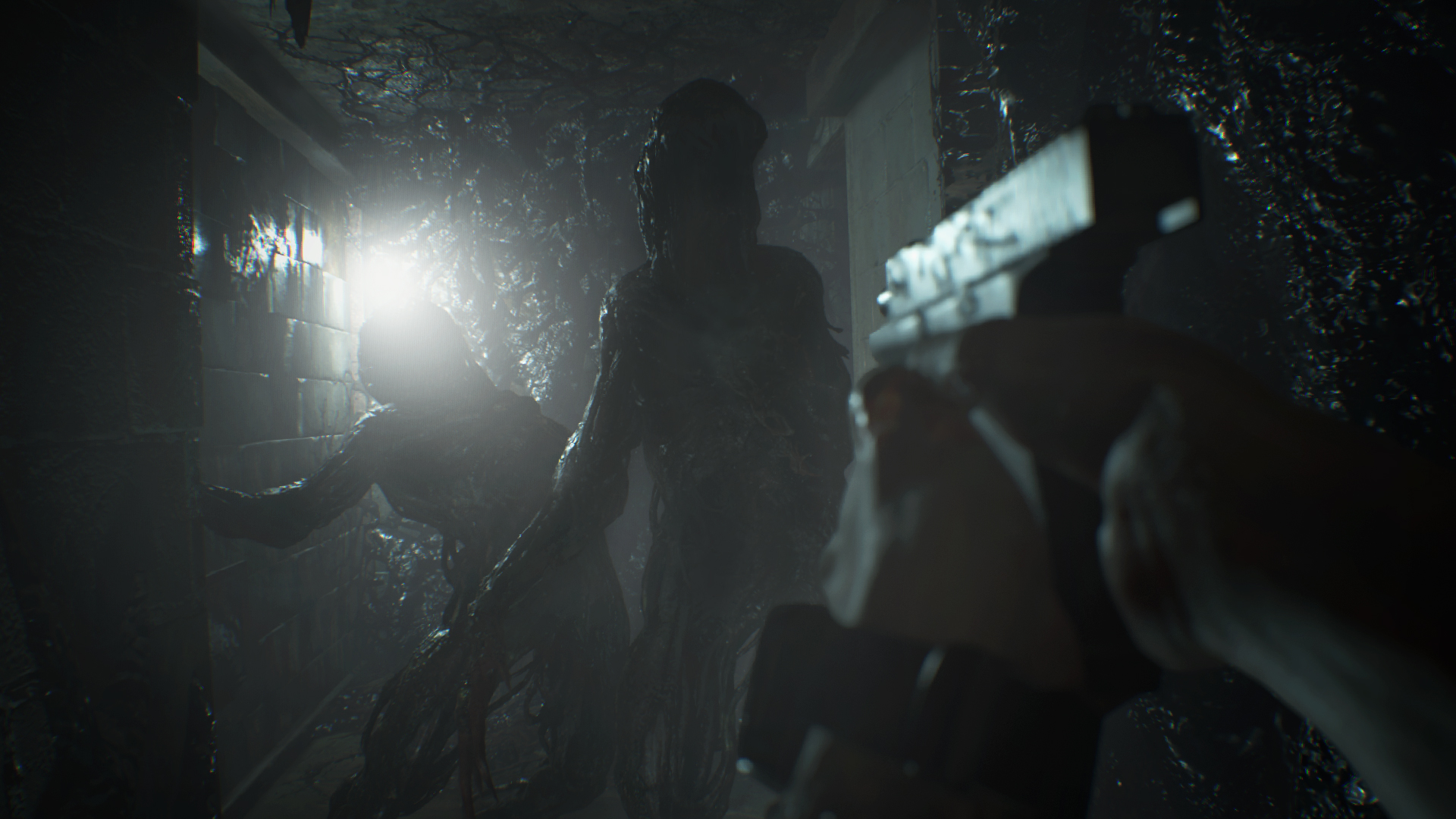
Resident Evil 7: Biohazard (2017)
Developer(s): In-house | Publisher: Capcom
Platform(s): PC, PS4, Xbox One
Resident Evil 7: Biohazard marks the beginning of a new era for the Resident Evil series. It stands in stark contrast to the action aesthetics of Resident Evil 4, Resident Evil 5, and Resident Evil 6, with Capcom unleashing a confident and self-aware experience that stripped the long-running series back down to the survival horror foundations it was built upon so long ago.
The shift to a first-person camera was a masterstroke. It gave Capcom credence to reinvent core aspects to play, emphasizing the exploration of a single atmospheric space while refreshing everything you can do within it – from combat mechanics and resource management to survival tactics and puzzle design. Resident Evil 7 works so excellently because it both literally and figuratively introduced a new perspective from which to view the world of Resident Evil, with Ethan Winter's horrifying descent into the derelict Baker Family plantation proving to be an experience in nightmare mitigation.
Resident Evil 2 Remake (2019)
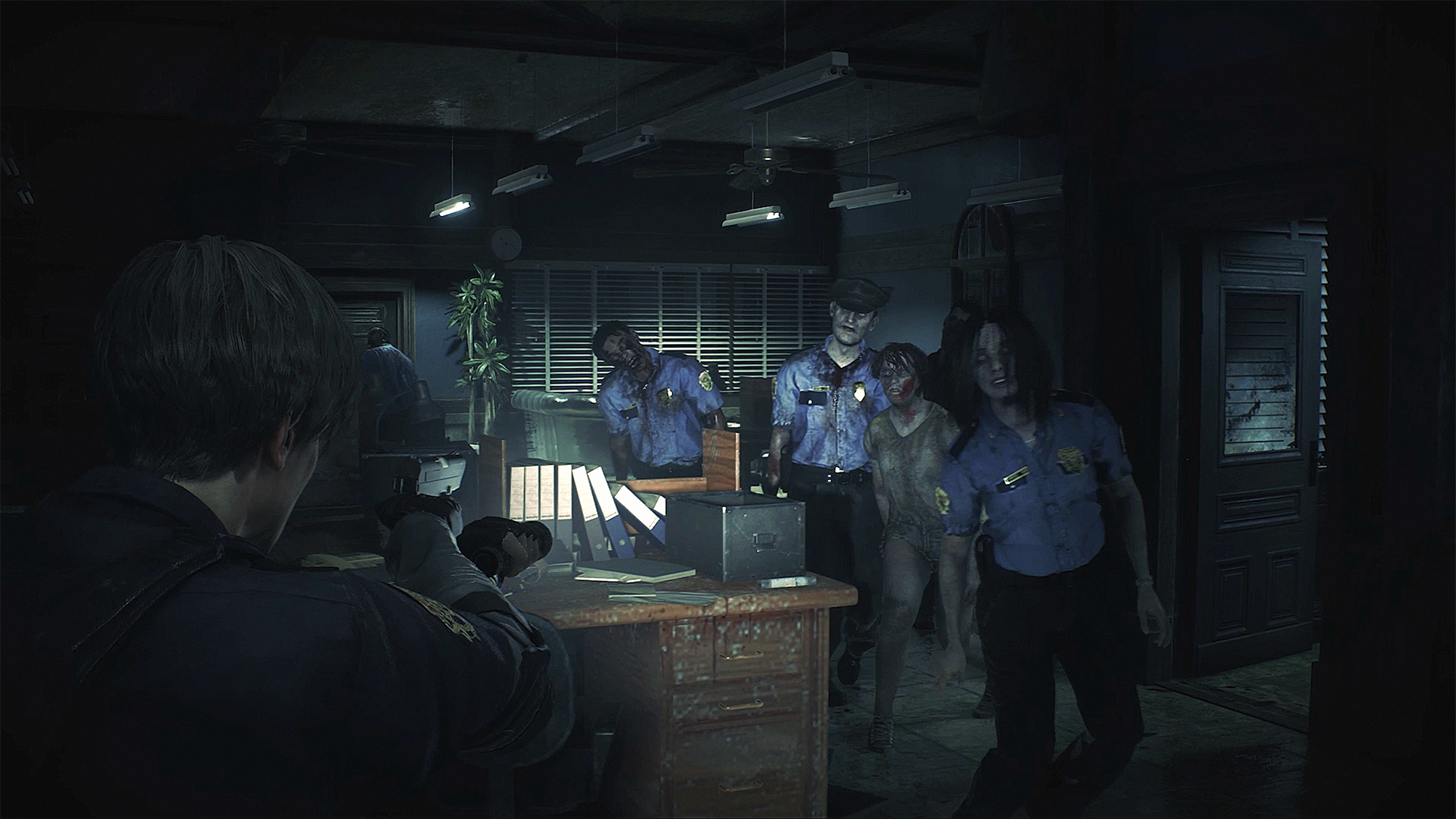
Resident Evil 2 Remake (2019)
Developer(s): In-house | Publisher: Capcom
Platform(s): PC, PS4, Xbox One
Back in 2002, Capcom established itself as the modern master of the remake. Few expected that the company would lay claim to that title once again, as it worked to completely reimagine Resident Evil 2 in 2019. Oh, we of little faith. With Resident Evil 2 Remake, Capcom proved that its depiction of a Raccoon City teetering on the edge of eruption was as potent in the modern era as it was some two decades before.
Resident Evil 2 Remake isn't just a thrilling love letter to the legacy of Resident Evil 2, it also acts as an opportunity for you to experience how the series might have evolved through the noughties had it not gone off in other directions. This is classic survival horror with a modern flair, unafraid to embrace expectations of the day with one hand and reach back into the past with the other.
Resident Evil 3: Nemesis Remake (2020)
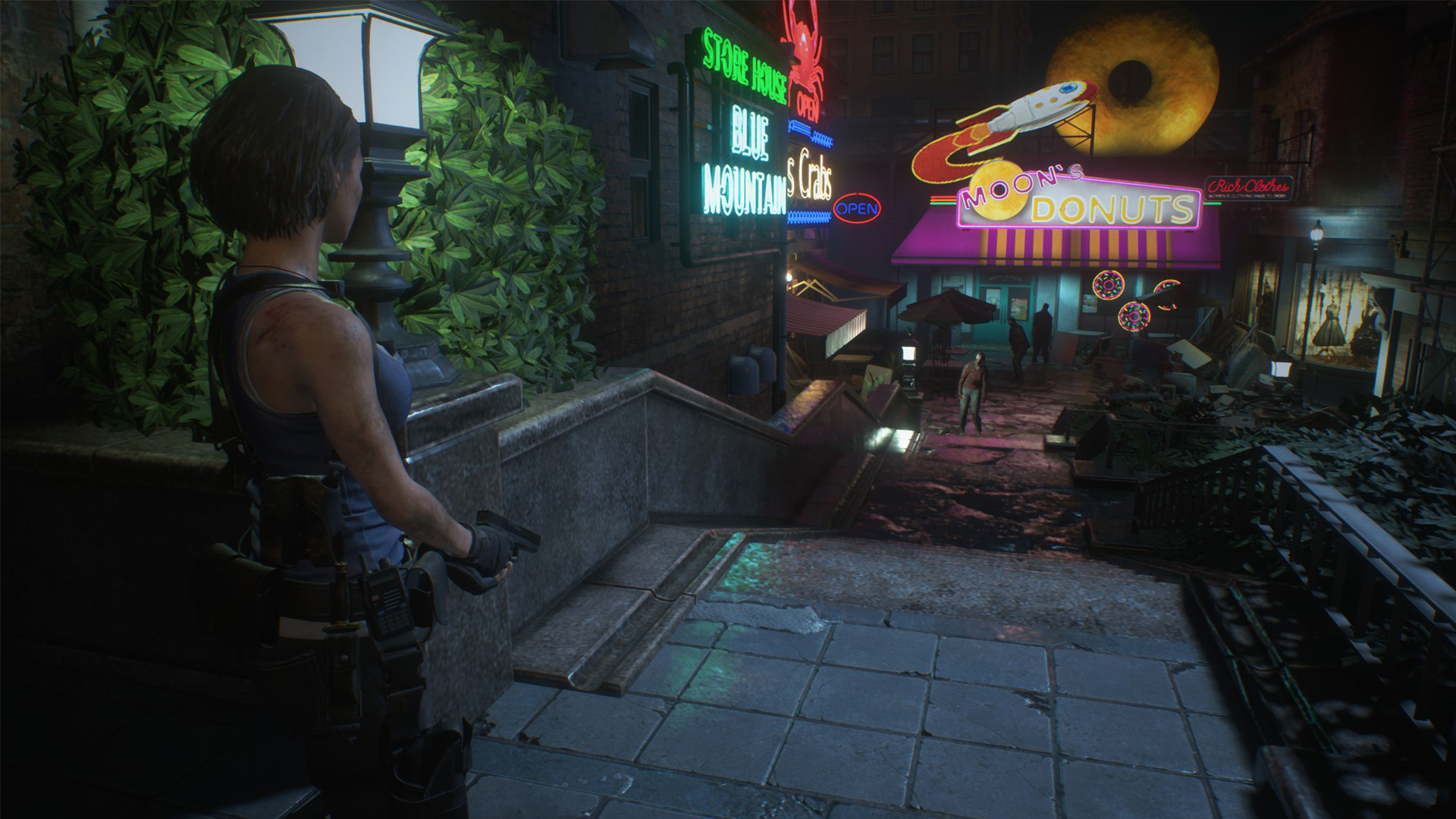
Resident Evil 3: Nemesis Remake (2020)
Developer(s): In-house | Publisher: Capcom
Platform(s): PC, PS4, Xbox One
Between the 2002 remaster of Resident Evil for GameCube and the 2019 reimagining of Resident Evil 2, Capcom set the bar impossibly high for its remakes. And as fun as it was to step back into Raccoon City as Jill Valentine, Resident Evil 3 Remake didn't land quite as successfully as its predecessors.
Resident Evil 3: Nemesis was, in many respects, the series' original turn towards action from pure survival horror, and that tension can be felt at the heart of this remake. The challenge of these kinds of creative endeavors is in striking a balance between respecting the past and modernizing scenario design crystallized in nostalgia. Resident Evil 3 Remake stood uncomfortably between the two, where a lavish production value could only do so much to obscure the shallow progression, tempered pacing, and a short playtime. Resident Evil 3 Remake impresses in its element, but it is stuck in the shadow of those that came before it.
Resident Evil: Village (May 7, 2021)

Resident Evil: Village (May 7, 2021)
Developer(s): In-house | Publisher: Capcom
Platform(s): PC, PS4, PS5, Xbox One, Xbox Series X
In Resident Evil: Village, we will see whether Capcom was right to invest so heavily in first-person. The perspective shift undoubtedly worked for Resident Evil 7 – particularly in the suffocating spaces of the Baker Ranch – but Village is taking us on a more ambitious adventure. What we'll be looking out for on May 7 is whether that style of play can be so readily transposed upon a sprawling village space and towering castle estate, as hordes of Lycans and Vampire cultists work on swarming Ethan Winters at every opportunity.
Everything we've seen of it in action thus far is promising, with Resident Evil: Village working to recreate the fun of Resident Evil 4 for a new generation of players. How successful Capcom will be in that endeavor remains to be seen, but we're certainly excited to see the publisher try, particularly as it looks to tie-up the loose ends of Ethan's story and put a dark twist on returning characters like Chris Redfield.

Josh West is the Editor-in-Chief of GamesRadar+. He has over 15 years experience in online and print journalism, and holds a BA (Hons) in Journalism and Feature Writing. Prior to starting his current position, Josh has served as GR+'s Features Editor and Deputy Editor of games™ magazine, and has freelanced for numerous publications including 3D Artist, Edge magazine, iCreate, Metal Hammer, Play, Retro Gamer, and SFX. Additionally, he has appeared on the BBC and ITV to provide expert comment, written for Scholastic books, edited a book for Hachette, and worked as the Assistant Producer of the Future Games Show. In his spare time, Josh likes to play bass guitar and video games. Years ago, he was in a few movies and TV shows that you've definitely seen but will never be able to spot him in.


